A visit to William Wegman’s studio in New York’s Chelsea neighborhood is an absolute delight. As soon as we opened the door, there were Flo and Topper—Wegman’s two current Weimaraners—eager to greet us, sniffing and barking and wagging their tails. They follow the artist around his home and studio, into the freight elevator, outside to the ivy-covered roof where Wegman and his son practice hockey, ready to please or to be picked for the shoot that day.
Few of us escaped childhood, or parenthood, without seeing Wegman’s dog videos on Sesame Street. We were beside ourselves witnessing that magic in person as Flo mounted a stool and sat still while a coat was draped over for a portrait with Wegman.
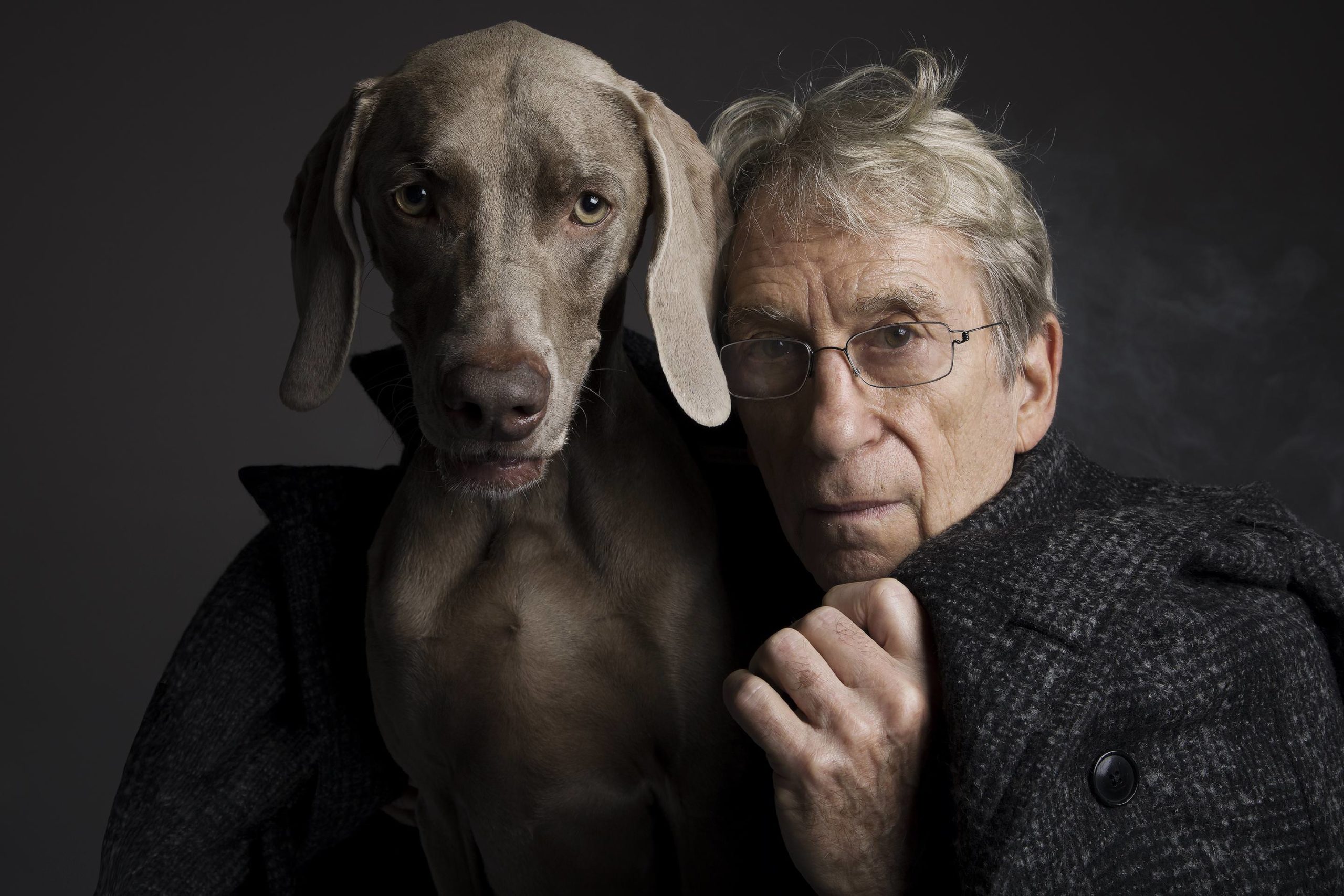
Photo by Steve Benisty.
This fall, Wegman’s exhibition “Dressed and Undressed” at Sperone Westwater coincided with the release of his new book, Being Human, by William A. Ewing, published by Chronicle Books. The publication and show focused on the 20-by-24 Polaroids Wegman made between 1979 and 2007, when Polaroid stopped producing the film.
Whitewall sat down with Wegman, with Flo on our lap and Topper nearby, to talk about the haunting process of going through his archive of nearly forty years’ worth of Polaroids.
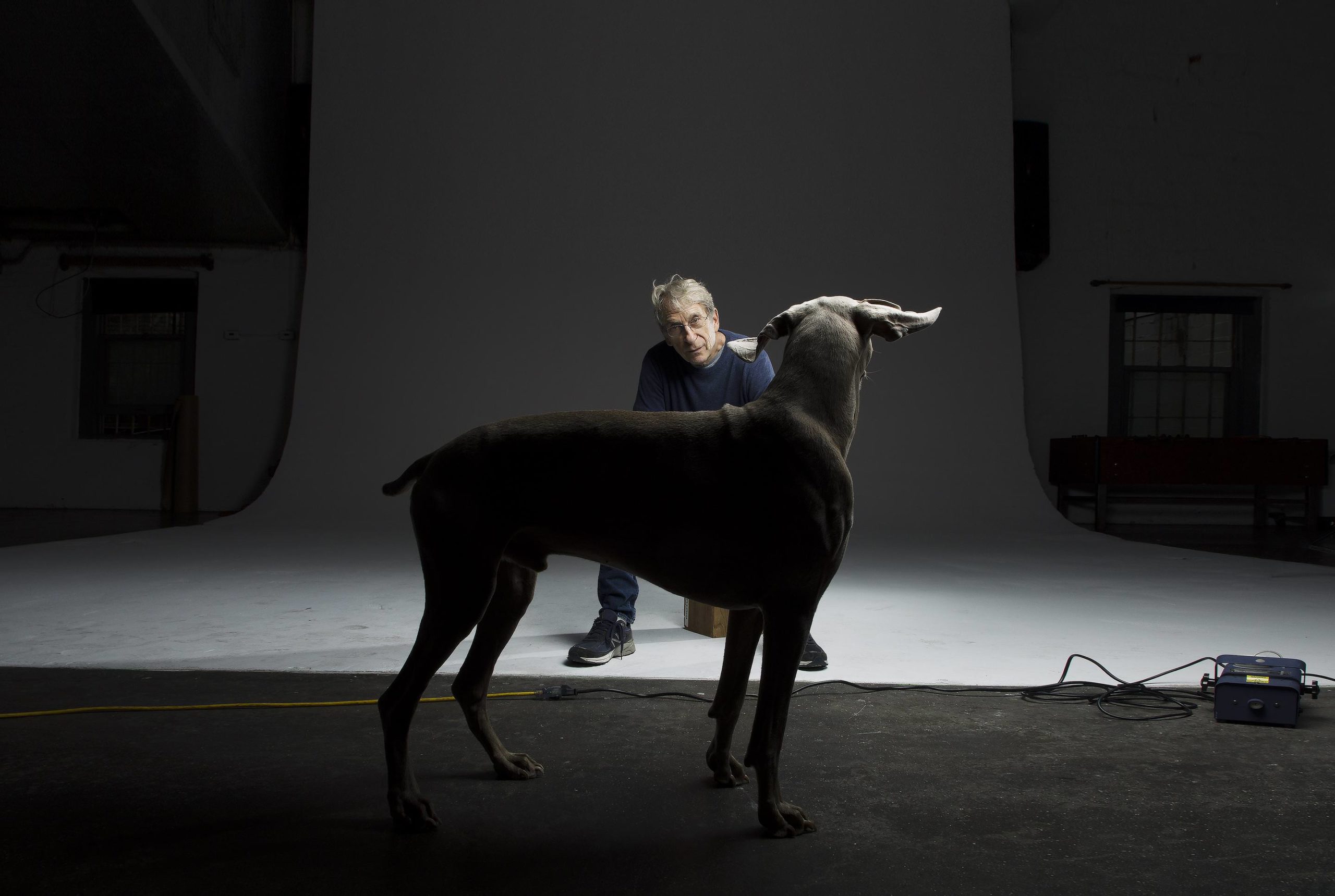
Photo by Steve Benisty.
WHITEWALL: Why did you originally start going through your archives of 20-by-24 Polaroids?
WILLIAM WEGMAN: We wanted to make a digital record of all these Polaroids, which I had made beginning in 1979. I started looking at every box from 2007 backward. It was haunting, because dogs would get younger and younger and then new dogs would appear, and get younger and younger. At one point my children appeared. It was haunting to see it all in retrospect.
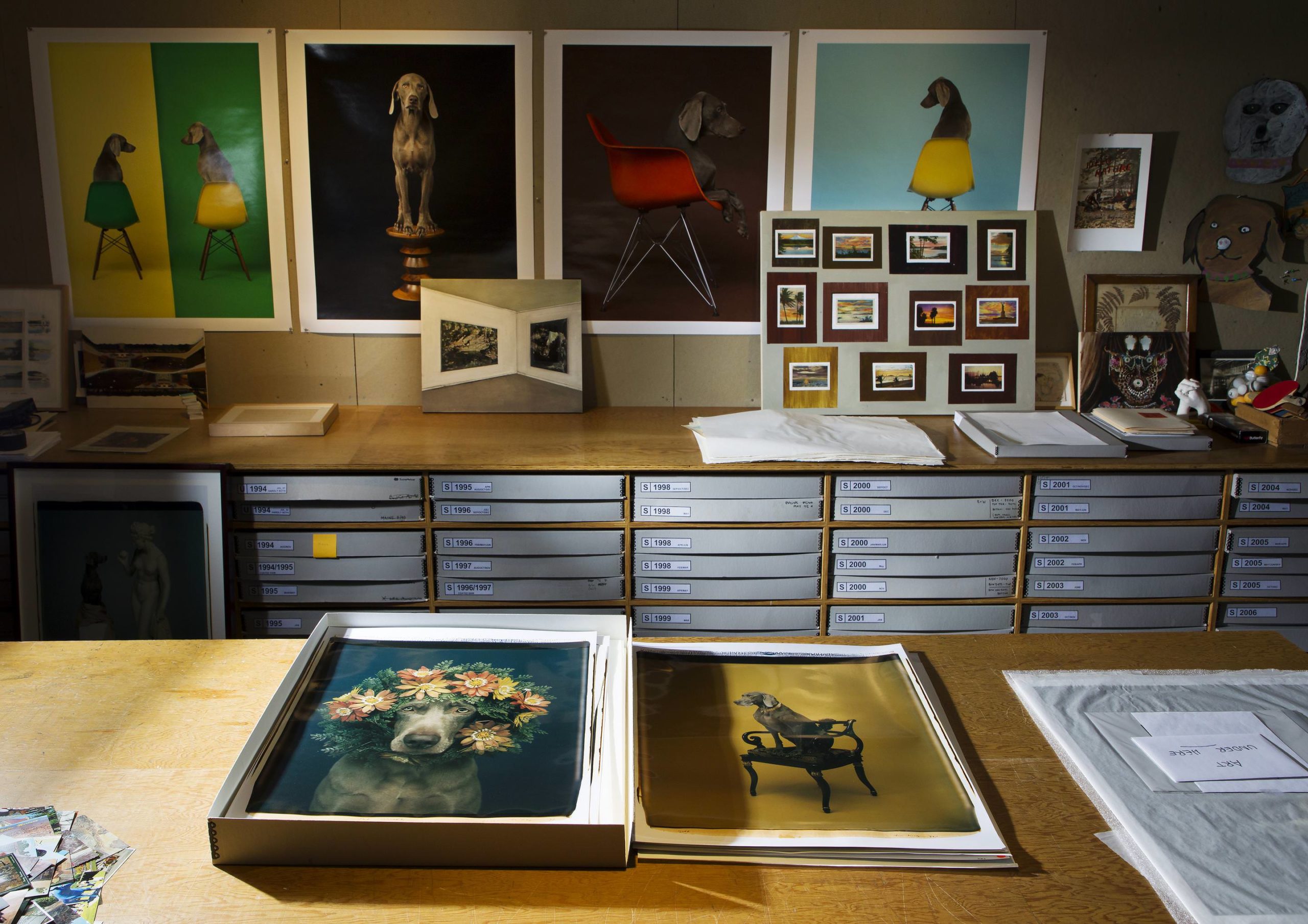
Photo by Steve Benisty.
Because of the way that I work with Polaroid—rent the camera for three days every two weeks—one or two would be chromed or set aside, but most were just stuck inside archival boxes and sent away to storage. I never looked at them again.
Bill Ewing asked if I wanted to do a photo book and this coincided with digitizing of all these pictures. And then Angela Westwater was excited about doing a show that coincided with the publication of the book.
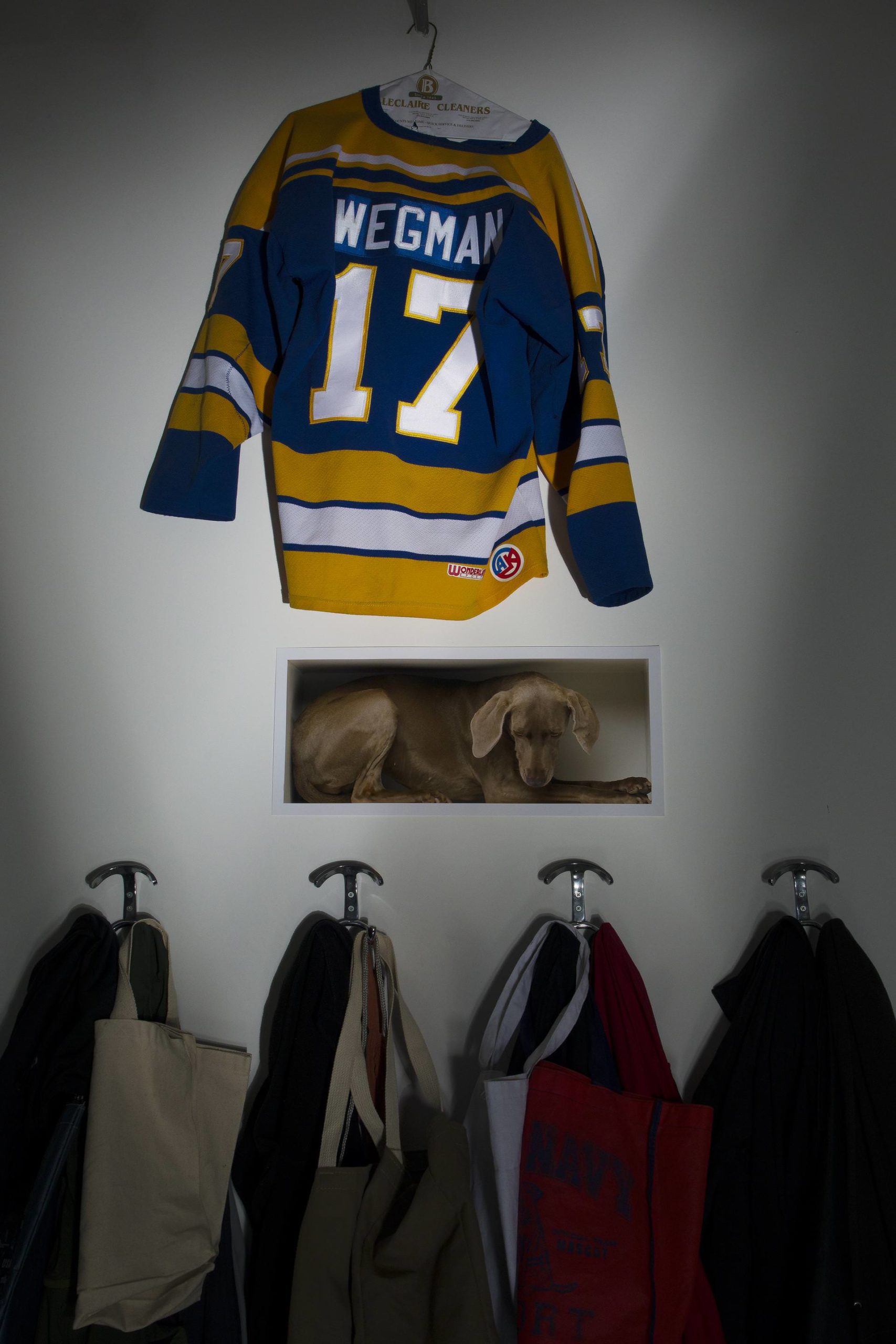
Photo by Steve Benisty.
WW: Seeing all your work like that, in reverse, did you realize anything new about your process?
WW: I realized that I haven’t really thought of anything new [laughs]. It just keeps reappearing. Little tiny threads snuck in and then disappeared, which I was excited to find again. And we didn’t rush through this. It was over a three-year period that we looked through all this work and digitized it. There’s a lot. I would shoot it like it was 35 millimeter, even though it was ridiculously expensive. I would shoot maybe 40 to 50 a day. Over a three-day period, that’s 150. Six would maybe be put aside to show, or three sometimes, or none.
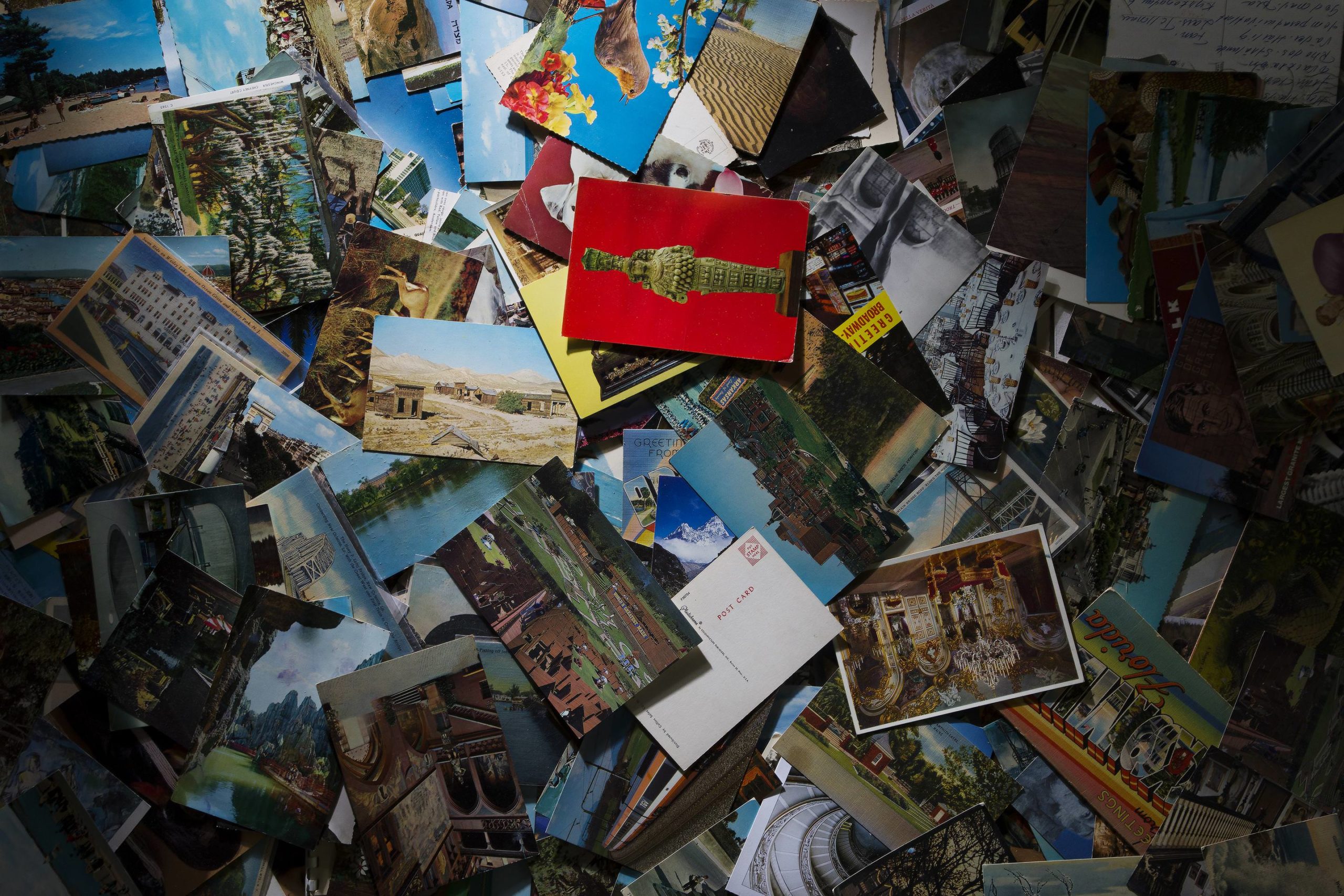
Photo by Steve Benisty.
WW: When you first started using 20-by-24 Polaroid, you liked both the jewel-like color and that it captured a moment that you didn’t even feel totally responsible for sometimes.
WW: Of course, the happy accident. I think the way that I responded was by seeing it in a little over a minute. You could amend it, or move on, and that was different from other photography, where you would process it, develop film, print it, and then see, “Oh gee, too bad you didn’t do this.” In a way, it was a lot like how I made my video where I would do a run-through, a take, and then look at it, and say, “Oh, I just need to say this now.” It was very much like that.
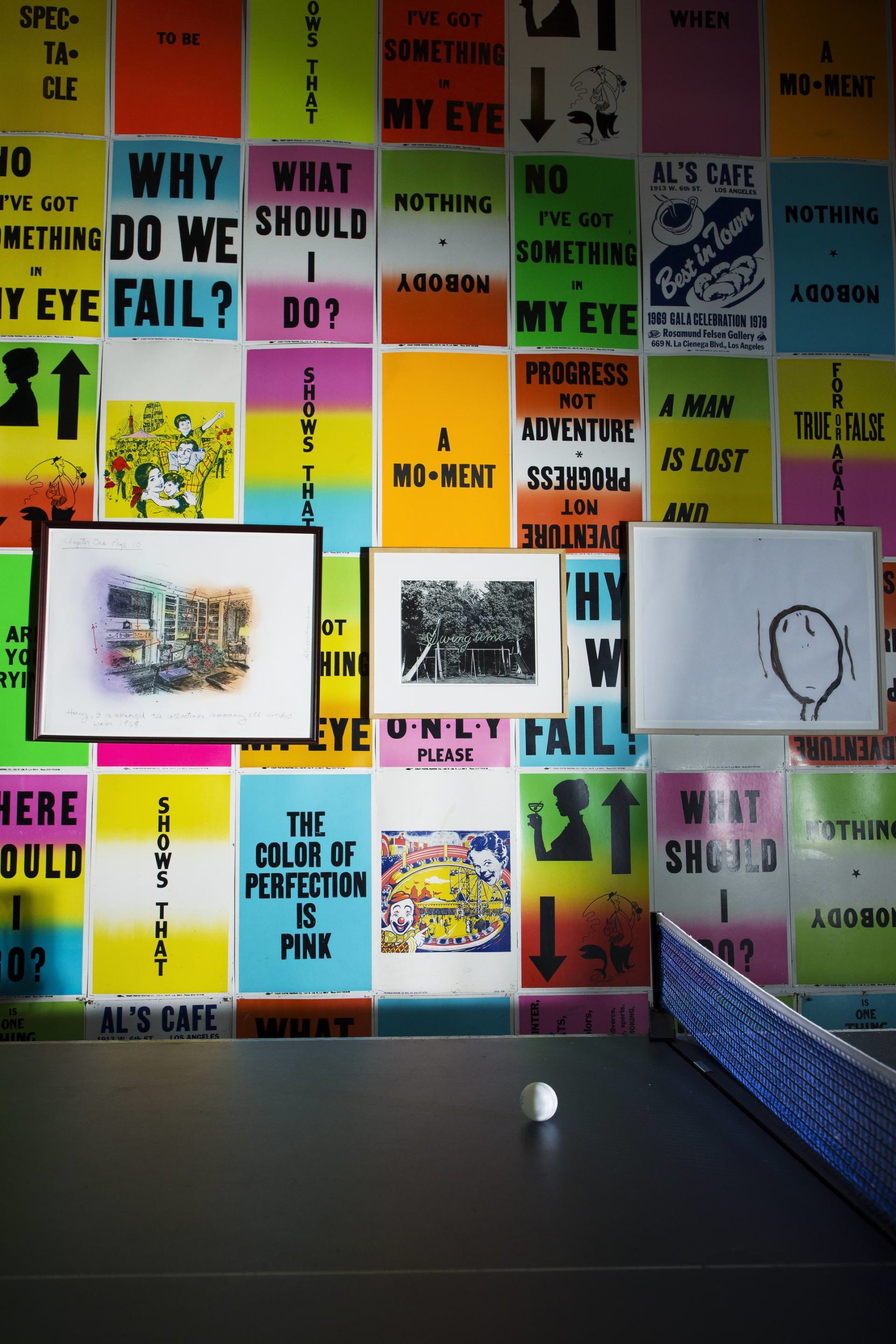
Photo by Steve Benisty.
With digital it’s even easier. The thing that I was worried about, which I probably didn’t need to, was that people would assume that it’s all Photoshopped. But I think even with the digital you can tell the dog is cooperating. And I like the theatrical aspect of that, that the dog is there in the time you see in the picture, not added to it.
WW: How have you been photographing Flo and Toper lately?
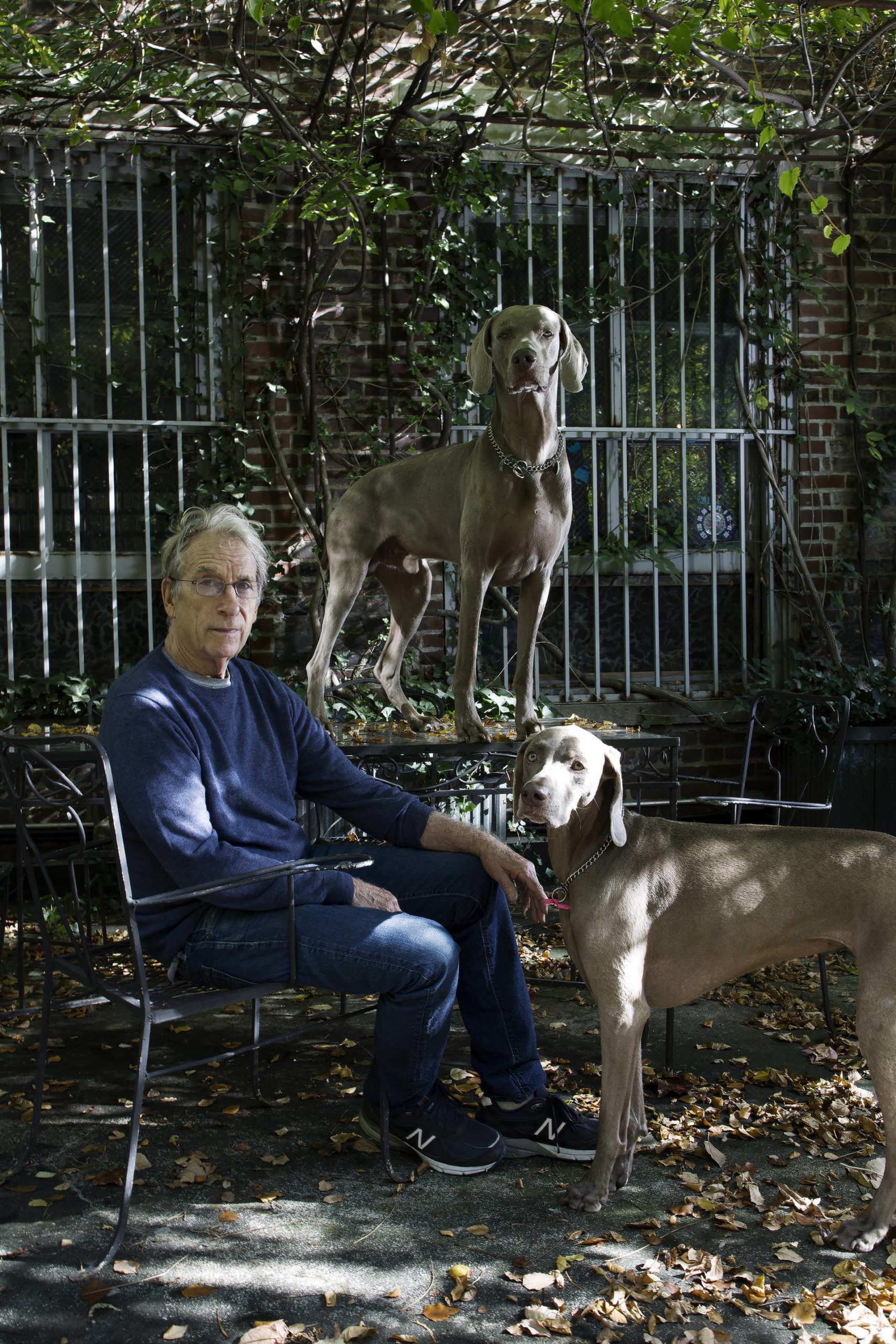
Photo by Steve Benisty.
WW: The last seven or eight shoots have been photographing them with really special merchandise or clothes, fashion stuff, or chairs from Herman Miller, fancy furniture. Working with things that are outlandish, it’s fun. I always thought of it as if you’re in improv theater and someone suggests, “How about Chanel? What can you do with that? Here you go.” That’s how that works.
Now I want to do some really ordinary things. The thrift store stuff I do is pretty wacky. So I want to do ordinary things. And that’s focused more on the dog, how the dog looks. So you don’t go, “Wow, look at that crazy thing they are wearing.”
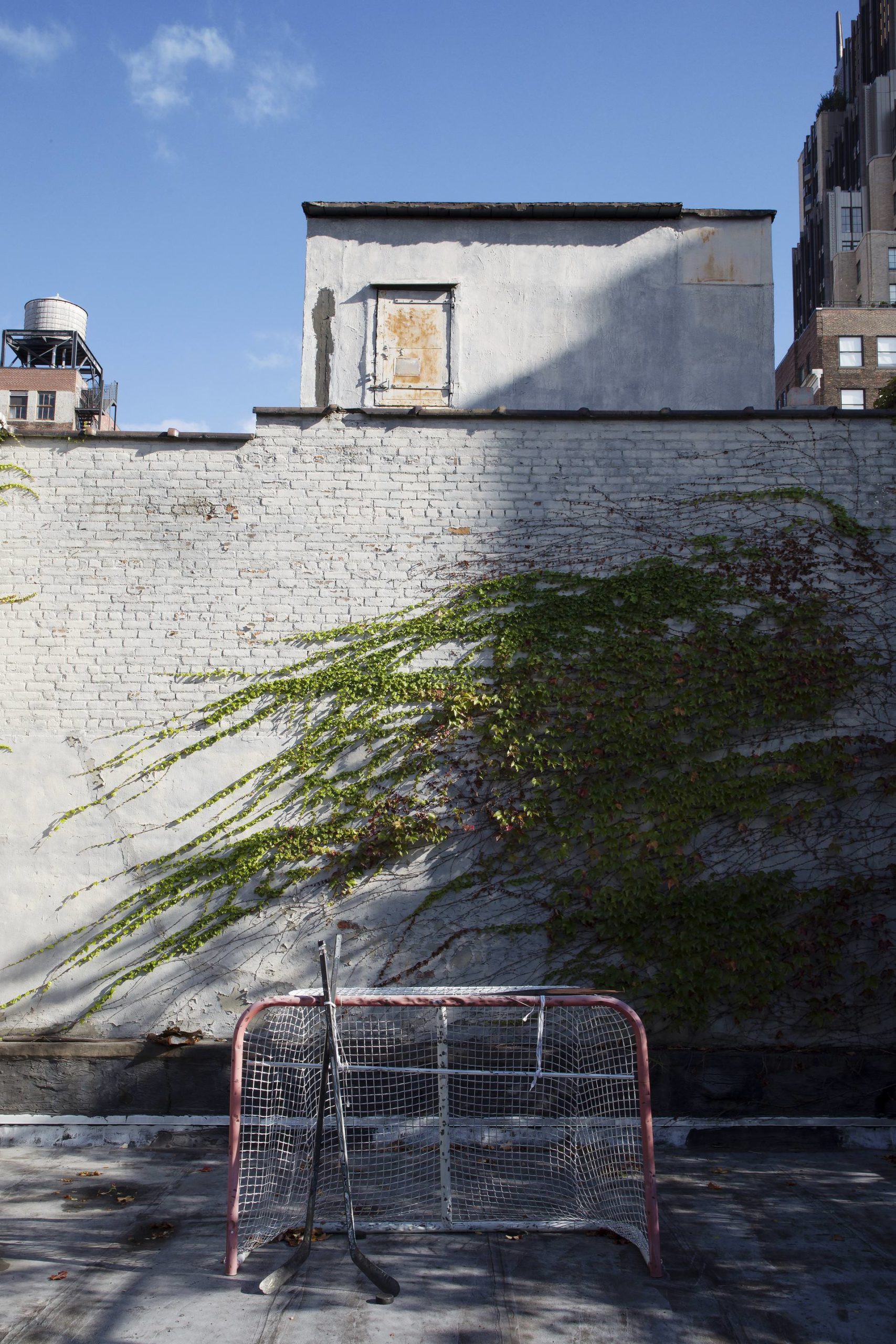
Photo by Steve Benisty.
This is really what I’m interested in, not really the Issey Miyake or Prada or whatever, which is all very nice, but I’m really interested in how Flo is wearing that, or how she’s reacting to it. Or what subtle changes I can see in their expression—that’s interesting. A lot of it has to do with lighting or camera angles, not even just them.
WW: Mentioning that you’d see more of the dog reminds me of a recent interview in which you discussed the new book, Being Human, where you talked about our desire to see something human in the dogs’ faces.
WW: Something about their look draws us into them and I think they know that, too. But when I’m making something look human, I know that it’s just pretend; I know that it’s not real. They let you borrow them and do all kinds of things for a while. They even like it. “Choose me.” You’ve seen how I work. I usually elevate them so they are up at your face level, which they like. They get calm being up high like that. When they are on things they are forced to be still, in a way; if they move they might get hurt. So they stay, and I keep it kind of serene when I’m working with them.
WW: You’ve just come back from spending the summer in Maine. Do you ever photograph the dogs there?
WW: I have. In fact, I brought the big camera up there and I shot Sesame Street videos there. I shot lots of stories and books there, with two and a quarter format, negative film, plus the Polaroid camera, which is almost like a film shoot where it requires a truck with drying racks and generators and lights. We’ve had the dogs out in boats and things like that. I’ve shot indoors there . . .
WW: Sitting here in your painting studio, I wonder how you split your time between painting and photography?
WW: I would say the photo stuff or video happens in bursts—more than a day every month, usually for a week or two. I paint pretty much all the time. Like this morning, I painted, you came, and I did some other things. It’s every day. What I like about it is that I don’t need assistants, I don’t need my assistant Jason [Burch] to come and hook up computers or light.
I never think about my photographs unless I’m doing it. I don’t plan. If I’d been thinking about what I might do, I go and rent a camera, set it up, and realize, “Oh that was a bad idea,” and then I’d get really scared. So I’ve learned not to.
WW: Do you work that way for your postcard paintings, too? Without planning?
WW: With the postcards I’m extending the edges of the postcard. When I started to paint in the eighties, after stopping during art school, I would take images out of old fifties encyclopedias, things I grew up with as a child. I was daydreaming, searching through images and putting them all together, melting one into another.
With postcards, I thought of it like this: You look out the window, and if you could stick your head through, you’d see where that goes. But in the postcard, just imagine where it goes and invent. That’s my take on that.
WW: Where do you get the postcards from?
WW: I have a huge collection that friends of mine have given me. It’s wonderful because before I glue them on, I photocopy them and read the notes.
WW: Come across any funny notes?
WW: I did come across one that my sister at age five wrote to her grandmother. My sister is now 65, so that was pretty remarkable. There are always crazy comments, so I always photocopy the back because I don’t want to lose that.
There are certain ones that I didn’t know how to use for a while. Then I find a way to go off them. There are some really pretty ones that are almost too good to use. I don’t necessarily use the best. Usually they are really easy to start.
WW: “Dressed and Undressed” is a small selection of these Polaroids at Sperone Westwater. Are there any moments or pairings that struck you?
WW: In the show, there is one of Batty, who—I hate to say it—might have been my all-time favorite dog. I was so in love with her. She was so funny. She’s in the show a lot and there’s a corner where’s she’s in a gray outfit with her sleeves tied. Next to it are some really formal ones. I liked looking at that. I didn’t know it would be hung that way.
I also liked how beautiful the Polaroid looked. I’ve been doing the digital, but there’s something so special about the Polaroid.
You can still shoot with this camera, but there is very limited film and it costs like $300 a shot versus $30. I just got used to digital, too. You have to use what’s there. I had to figure out how to deal with digital—it’s here now.
WW: And you’re locked into this time period when Polaroid was available.
WW: You know what was remarkable, too, is that all of my dogs, their whole life is photographed in front of this camera. The very first picture I took of Fay up until her last picture was this one camera. And Batty from age five weeks to her last, practically. It’s kind of cool to see under one lens this arc of a whole life.
WW: And remember yours, too.
WW: It’s haunting.
William Wegman: Being Human is out now. His work will be on view at the Metropolitan Museum of Art in New York in January 2018 with a major international exhibition to launch next summer.









